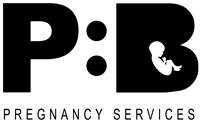Candida albicans is a common, natural organism that can cause thrush in various places around the body. Here, we will look at how it can affect the breast and nipple. It is particularly important to diagnose and treat this infection when a woman is breastfeeding, as any pain and discomfort can sometimes lead to a woman moving away from breastfeeding in an effort to relieve the symptoms.
Have I got thrush?
Often the first symptom of breast and nipple thrush is pain in the affected area. When breastfeeding, the pain can occur during feeds, or straight after feeding. Visible signs can include thrush in your baby’s mouth (particularly on the tongue) which looks like a white substance or white patches, or your baby may have a sore, red, spotty bottom that does not clear up with typical nappy rash creams. Your nipples may look red, or if you gave cracked nipples, the sore may take longer than usual to heal. Itching can also be a sign of thrush, as can a burning sensation.
What should I do?
In the first instance, you should see your midwife or GP. They will advise on creams that can be applied to the nipple area and/or to the baby’s mouth and bottom if necessary. You will both need to be treated at the same time to stop passing it back and forth to each other. Change your breast pads regularly to keep the area as dry as possible. Wash any clothes or materials that come into contact with the affected area of the body in hot soapy water and dry thoroughly. Wash your hands after changing nappies or applying creams. You can continue to breastfeed or, if easier, you can express milk to give to your baby. If you choose to express and freeze your milk whilst you have thrush, don’t give this milk to your baby once the infection has cleared up as this could re-introduce the fungus. Dispose of any milk in this instance.
Need more information?
Why not contact us using the form below and we will get back to you as soon as possible…
Error: Contact form not found.








